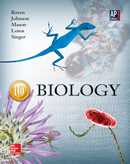1 A) in the mitochondria. B) in lysosomes. C) arrays of short microtubules that radiate from the poles and may brace the centrioles against the membrane. D) attached to ribosomes. E) Bridges of microtubules between the centrioles and the opposite poles of the cell. 2 A) interphase. B) prophase. C) metaphase. D) anaphase. E) telophase. 3 A) interphase B) prophase C) metaphase D) anaphase E) telophase 4 A) interphase B) prophase C) metaphase D) anaphase E) telophase 5 A) transcription. B) translation. C) duplication. D) fission. E) replication. 6 A) Cohesin B) Adhesin C) Centromerin D) Glycolipid E) Kinetochore 7 A) A multinucleate situation would occur. B) The cell would die. C) The cell will lose some of its chromosomes. D) Cancer is a likely result due to the excessive numbers of genes in the cell. E) A new species can arise. 8 A) There's no particular purpose to genes given this name although most are involved in regulating the cell cycle, and if mutated, can give rise to cancer B) These are viral genes which can hijack cells into dividing without responding to normal cellular cues. C) These are critical genes that ordinarily provide for the well-being of the organism, but gain new functions, if mutated, that create tumors. D) They are very ancient genetic signals, and provide for cell nutrition. E) Proto-oncogenes are classes of related proteins which all occur sequentially on a chromosome. This allows them to be activated one-after-the-other to make the proteins required for an organism to thrive 9 A) Binary fission B) Mononuclear fusion C) Meiosis D) Mitosis E) Replication 10 A) Sister chromatid B) Replicon C) Karyotype D) Mitotic bundle E) Divisosome 11 A) True B) False 12 A) Centrosome B) Telomere C) Kinetochore D) Centromere E) Cohesion 13 A) Plants are unrelated to animals, so they have evolved different ways for their cells to divide. B) Animals use their kinetic energy of motion to coax the cells into splitting. C) The cell wall around each plant cell prevents constriction of the plasma membrane to cause the cells to divide. D) Animal cells lack cellulose, and so a different method of splitting the cells had to be devised. E) Organelles won't be properly positioned in plants because they are static, unchanging creatures. 14 A) lupus. B) nondisjunction. C) cellular atropy. D) cellular degeneration. E) cancer. 15 A) Proto-oncogenes B) Tumor-suppressor C) Tumor-promotor D) Oncogenes E) rRNA genes





